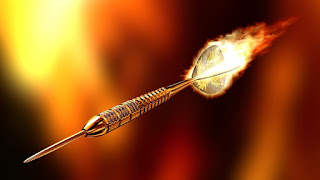The word "oche" originates from the French word "hocher," meaning "to nod" or "to flinch." It is believed that the term was adopted into the game of darts due to the slight forward movement or nod that players make with their leading foot before releasing the dart.
The history of the oche can be traced back to the early days of darts, when the game was played in pubs and taverns. In these informal settings, players would often stand at various distances from the dartboard, resulting in inconsistencies and disputes. To standardize the game and ensure fair play, the oche was introduced as a fixed distance that players must abide by.
The standard distance from the dartboard to the oche is 7 feet 9.25 inches (2.37 meters). This measurement is regulated by major darts organizations, such as the Professional Darts Corporation (PDC) and the British Darts Organisation (BDO). The oche is typically marked on the floor using a raised or painted line, sometimes accompanied by a physical barrier to prevent players from stepping over it.
Over the years, the oche has become an integral part of the darts game, shaping the techniques and strategies employed by players. It provides a consistent reference point for players to position themselves and develop their throwing style. The oche also adds a level of challenge, as players must maintain their balance and accuracy while adhering to the prescribed distance.
In addition to its functional purpose, the oche has also become a visual symbol associated with the game of darts. It represents the starting point of each player's journey towards the dartboard, where precision and skill meet in pursuit of high scores and victory.
Photo: Pixabay (free)

No comments:
Post a Comment
Thanks for your comment.